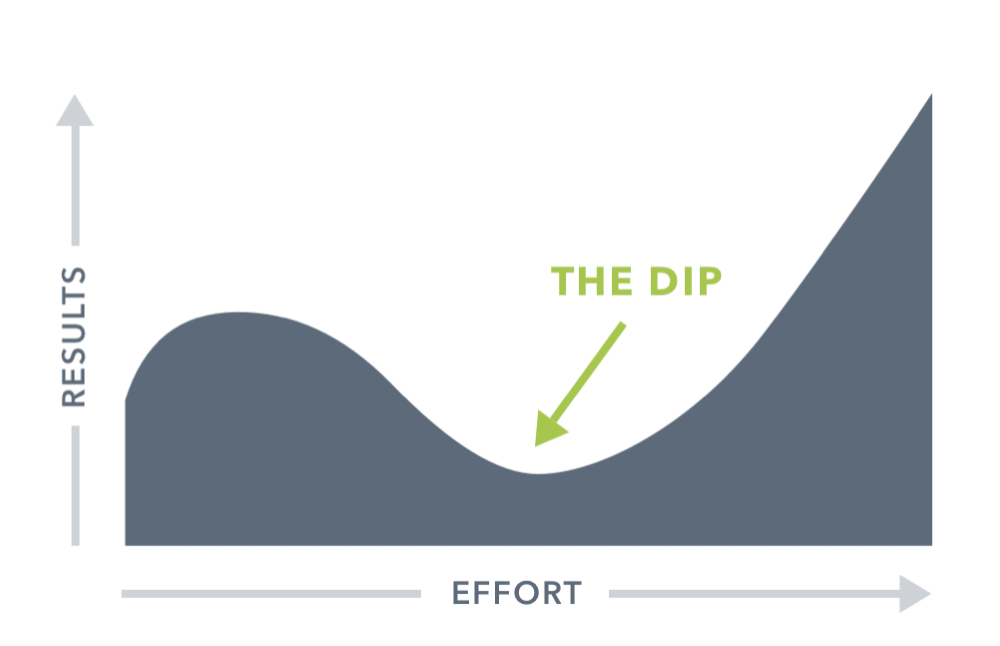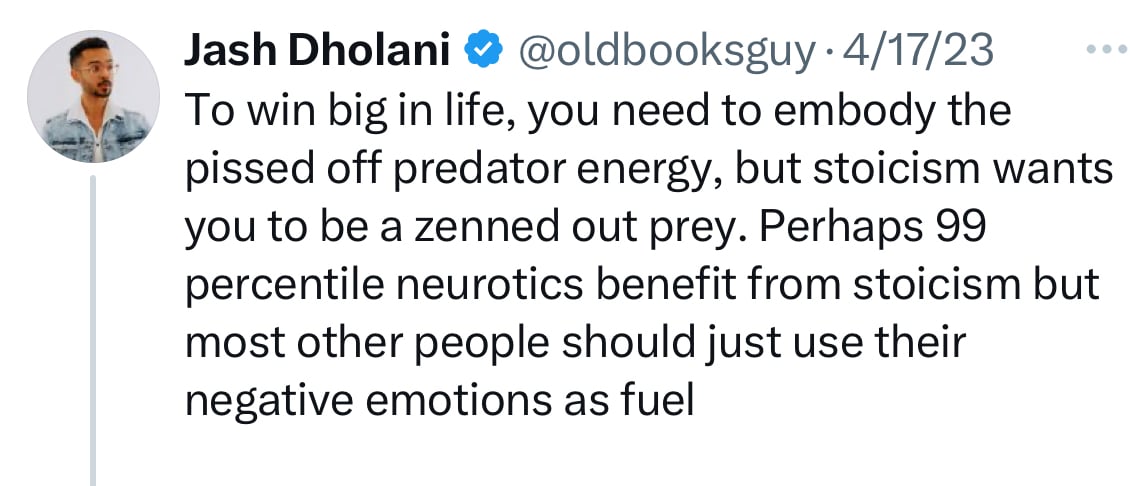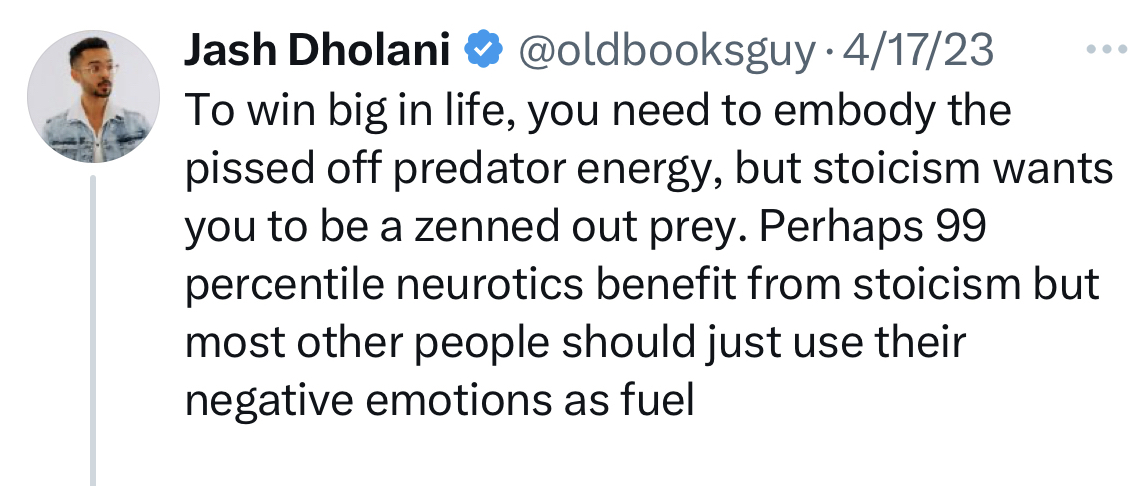The first twenty minutes sitting on that pillow should have given me a clue: I was more than uncomfortable. Within a few hours, my legs and back ached. By the second day, my back was knotted like a tree house climbing rope; and by day three, my legs felt like they were searing from the inside out. The last few days even walking was painful. There was no reprieve.
At the end of Day Five, my mind began to play games with me. I was an odd mixture of pride – having completed five whole days of meditation – and terror. I still had another five whole days to go. Rites of passage are designed to test you; they’re about survival as much as anything. Robert Bly argues in his book “Iron John” that a rite of passage is not as much about being successful in the endeavor as it is about striving in the attempt. As the fable goes, the young prince is unsuccessful but nonetheless rewarded by his mentor. The arc of the story suggests the true benefits of a rite of passage are what we learn.
I was on that torture pillow for two flimsy reasons. I call them flimsy because, in hindsight, I clearly did not know what I was getting myself into. I blame my misunderstanding on the use of the word “retreat” in Meditation Retreat.
The first reason was that I believe in the magic of rites of passage. Living abroad for two months in high school inspired a life of travel and living overseas. A wilderness survival course inspired a greater appreciation for nature and an ability to remain calm each night when the lights go out. A Vision Quest in the Australian bush – four days of fasting in the woods with nothing more than water, sleeping gear, and a never-uttered-prayer not to see a snake – inspired a marriage proposal and a need to create art and prose. My life is significantly richer for having endured, and sometimes enjoyed, these emotional journeys.
The second reason was that I had been out of work for two years and I had the time to spend 10 days in silence. My previous career did not lend itself to this type of thing. Although, on reflection, I could have used it. I quit my job with the intention to start my own company and quickly realized that I was burned out and needed a break. A few weeks turned into a few years. Maybe this meditation thing would stoke the fire, provide some clarity, and get me off my ass to start that company.
I expected a 10-day meditation retreat to be filled with some struggle, but I had no idea I would be consumed by tortuous pain. At the end of the course, I vowed to never do it again. To my surprise, I kept meditating day after day. I couldn’t articulate why I was meditating every day, but I could feel something valuable was coming from slowing down and sitting still. Next week, seven months after my first 10-day meditation retreat, I’m going back for Round 2.
It’s clear that the first 10-day meditation retreat was a transformative rite of passage. It just didn’t go as planned. Instead of a Red Bull shot of clarity and motivation, I slumped into complacency. I was awkwardly unable to explain why I meditated for up to two hours a day, and yet, couldn’t find the motivation to start my company. I thought I was totally ready. I certainly told myself that I was.
It was as if I was living two lives at once. I was having a meditative experience on my pillow – with clear positive effects on my relationships and well-being – and I was walking around without the words to describe it. It’s as if I could feel the benefits, but they were detached from my mind. I didn’t have the capacity to put my experience into words or action. So I started to read and listen to meditators like Sam Harris, Joseph Goldstein, SN Goenka, Jim Dethmer, Chris Wilson, and Chögyam Trungpa. Their words helped me intellectualize my felt experience and one topic that stuck out was motivation.
It turns out many new meditators experience a period of complacency and many question, “If I continue to meditate, am I going to lose my edge?” Jim Dethmer on the Tim Ferriss Podcast explains,
“One of the things I’ve observed in myself, and then in others, is that when somebody starts to do something like meditation, there is often, not always, but often, a period where something that looks like complacency does emerge. And I think there are many reasons for that, but one of them is that a lot of high performers are motivated by some sort of fear at the core of their being. And that motivation has served them very, very well. And a lot of the most achievement-oriented, successful people have a large engine of fear. So when you start dealing with that, one of the things that they’re going to face is, “If I’m not motivated, either consciously or unconsciously, by the things that have motivated me, whether it’s fear or extrinsic reward, what am I going to be motivated by?”
This fits with my experience. After quitting a decade-long career at a company I helped grow from 150 to 4,000 employees, from $20M to $1B in revenue, I was burned out. It took me a year to unwind, and it was another year before I sat on the meditation pillow. Instead of emerging from the meditation hall a bucking bronco, I limped out. I wasn’t prepared for a period of complacency. It is a scary and difficult time; more difficult for us highly dedicated and successful Type-As.
The trick is not to give up.
Seth Godin’s book “The Dip” has been imprinted on my brain for more than two decades. The concept is simple: knowing when to quit is a valuable skill. The problem is that most people quit at the wrong time; sometimes too late, but most of the time too early. Godin describes the path to success as one that initially sees good success, then plateaus, and then quickly begins to wane. This is the start of The Dip. It can last for any length of time, but the key is to know that The Dip always happens. Godin’s advice is to lean into The Dip and try harder. The extra effort will shorten the time it takes to regain your past success and reach new heights. The key message of the book is don’t quit at the first sign of adversity. Don’t quit too early.
Tibetan Buddhists have a similar concept called the bardo. It is a purgatory-like “island” between life and death. In the bardo your mind encounters visions of deities and your level of enlightenment sorts you into the appropriate afterlife realm. Chögyam Trunpa explains,
“We should have some understanding of bardo: bar means “in between” and do means “island” or “mark”; a sort of landmark which stands between two things. It is rather like an island in the midst of a lake. The concept of bardo is based on the period between sanity and insanity, or the period between confusion and the confusion just about to be transformed into wisdom; and of course it could be said of the experience which stands between death and birth.”
The problem with The Dip is that you can’t see the finish line. This is beautifully described by Chögyam Trungpa when he describes the bardo as “the period between confusion and the confusion just about to be transformed into wisdom.” If you quit in The Dip, you never get to the finish line. You sacrifice wisdom. You sacrifice competence. You sacrifice the reward that sits just beyond your fear.
The central lesson from Tibetan Book of the Dead – the Buddhist text that describes the bardo – is “the recognition of one’s projections and the dissolution of one’s self in the light of reality.”
I don’t know anything about the dissolution of one’s self, but I can identify a fair share of my own projections, and thanks to meditation, I have a growing sense of “the reality of what is.” That fear I feel in The Dip is mostly toxic bullshit.
I recently saw a tweet that extolled the rewards of using negative emotions as the fuel for our success. To me, this is giving in to the bullshit. This is using fear, and other negative emotions, as our primary motivation source. The problem with this advice is not that it isn’t effective, it’s that it leaves a toxic residue of unintended consequences. And there is a better way just beyond “the confusion just about to be transformed into wisdom.”
The lull in motivation isn’t forever. When I continued to meditate, I began to find new sources of energy. Little by little, I am trading fear-based motivation – the motivation created by external reward, approval and deadlines – for motivation derived from purpose, creativity, curiosity, and “action-accomplishing wisdom.” As Jim Dethmer says, “In my experience, other forms of motivation come online, like creativity, like playfulness, like love. There’s a whole set of motivations that are actually incredibly powerful and don’t leave much of a toxic residue like fear or guilt or shame does.”
“The food of meditation nourishes skillful action”- Chögyam Trungpa
We can be happy, free, and creatively motivated without leaving a grease slide of suffering in our wake. This is a call to arms for all new meditators: DON’T QUIT. When our motivation waivers and we feel consumed by a motivationless fog, trust in The Dip and the bardo, and press on into that confusion just about to become wisdom. Keep meditating, the motivation will return and it will be different; purer, better, freer.
"Nobody is going to save us; everything is left purely to the individual, the commitment to who we are." - Chögyam Trungpa

